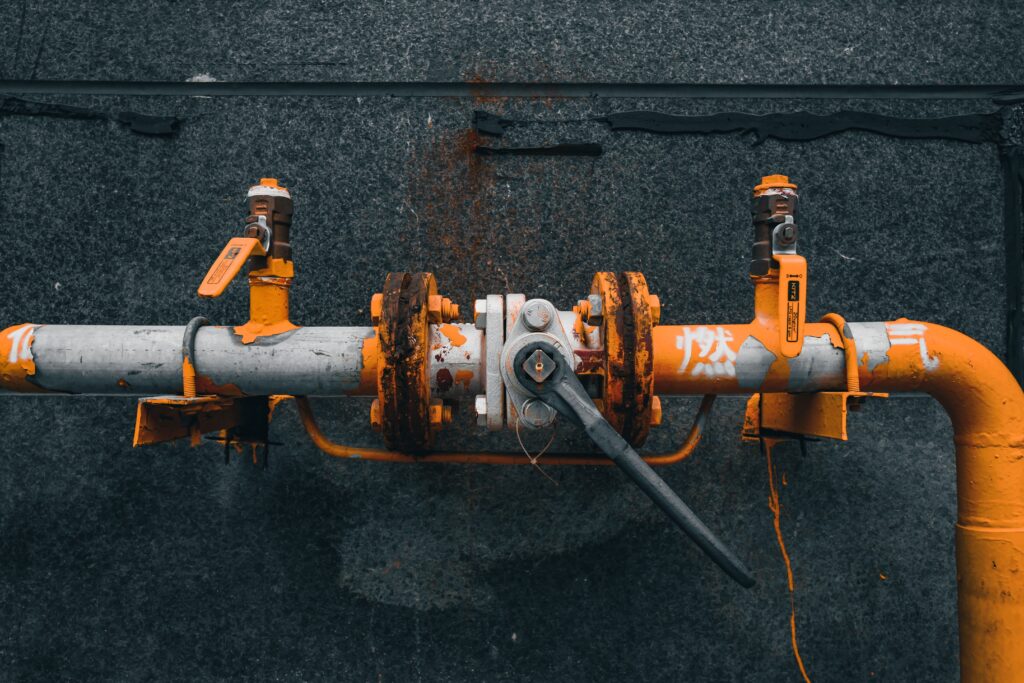How to Build a Successful Sales Pipeline
One of the main reasons why companies today fail to close more deals is the lack of a systemic approach that structures their sales process. That’s why building a solid sales pipeline should be the first step to turning any struggling organization into an industry leader.
Whether you’re new to sales or a seasoned sales professional, it’s crucial to understand what sales pipelines are and how they work. So in today’s article, we’re going to help you get there by answering the following questions:
- What is a sales pipeline?
- What makes sales pipelines so important for sales success?
- What does it mean to build a sales pipeline?
- What are the main stages of a sales pipeline?
- How to build and manage an effective sales pipeline
Ready?
Let’s dive in.
What Is a Sales Pipeline?
A sales pipeline is a visual representation of all the stages that your potential clients have to go through in the sales process. In simpler terms, it’s a general overview that helps you visualize how leads are moving through your sales cycle.
Sales pipelines differ based on each company’s sales process and the duties they must perform at each stage.
For example, your sales pipeline could include stages such as — prospecting, qualification, proposal, negotiation, and closing. Your sales team will have different duties at each stage to move leads from “awareness” and “interest” all the way to making a purchase decision.
There are many tools you can use to create a sales pipeline, the most popular ones being Microsoft Excel and Google Spreadsheets. A lot of CRM software will also allow you to create sales pipelines in a few clicks — which is great if you want to save yourself a lot of time and headaches.
What Is a Pipeline in Business?
In business, “pipeline” refers to any series of processes or flow of stages that are required for the production and delivery of a final product or service. The term could is used by professionals in many industries where multi-stage production is common — such as manufacturing, technology, engineering, as well as the service industry.
In sales and marketing, “pipeline” refers to the series of steps involved in turning a prospect into a paying customer and keeping them satisfied. That involves stages such as lead generation, outreach, lead qualification, lead nurturing, and deal closing.
What Makes Sales Pipelines So Important?
There are a lot of benefits to building a sales pipeline for your own company. For starters, it’s a crucial tool for your business because it can help your sales reps manage different leads easily.
Moreover, a powerful sales pipeline will allow you to identify your most valuable prospects — which leads to better lead nurturing and higher engagement rates. Beyond that, having a clear visual representation of your leads is vital for tracking your sales performance and predicting company revenue more accurately.
What Does Building a Pipeline Mean?
Building a sales pipeline means breaking the buyer’s journey into simpler, interconnected, and easy-to-track stages that eventually help you keep sales reps accountable. Each stage will have specific sales tasks and processes that your SDRs must perform to convert more potential buyers into paying customers.
Here’s a quick example of what the first three stages in your sales pipeline might look like:
Stage (1) Prospecting — lead generation, data enrichment, cold outreach
Stage (2) Lead qualification — lead scoring, needs assessment, lead nurturing
Stage (3) Proposal — appointment setting, creating tailored proposals based on prospect needs and preferences
As you may have noticed, creating an efficient sales pipeline requires setting the right growth objectives. It’s also essential to understand who your ideal buyers are and to use effective KPIs to track sales progress at each stage of the funnel.
Although your first sales pipeline will help improve your overall sales performance, it will surely be far from ideal. You need to constantly optimize your sales systems by testing new strategies and methods while monitoring your SDRs’ productivity.

What Are the Stages of a Sales Pipeline?
Sales leaders break down their pipelines based on a variety of factors, including lead quality, industry competition, sales cycle length, and especially the complexity of the product or service being sold.
To give you an example:
Businesses selling simple services may not have to talk too much to their prospects before closing a deal. On the flip side, SaaS companies selling novelty products might have to create an 8-step sales funnel to successfully turn cold prospects into happy customers.
All in all, most sales pipelines are identical in their overall structure. The only changes that might happen will be related to how different stages are named and how complex the sales process is.
- Prospecting: this is the first stage where SDRs must find new leads and initiate contact with them.
- Lead qualification: once new prospects enter the sales funnel, sales reps will start scoring and nurturing them while taking into consideration their pain points and expectations.
- Proposal: in this step, the sales team will prepare a presentation promoting the product or service as the ideal solution to the target lead’s problems.Using proposal templates and customizing one can help cover all essential information and maintain a professional appearance here.
- Negotiation: any potential buyer that shows interest will enter a negotiation stage where their biggest concerns and objections are addressed. This may also be the phase where the sales team discusses pricing and payment terms.
- Closing: leads at the closing stage are ready to finalize the deal and complete any paperwork required. Once the deal is closed, these prospects will become paying customers.
- Retention: this is also referred to as “post-purchase”, which is the follow-up phase where the sales rep starts contacting the new client to ensure their satisfaction. There’s always a chance for a cross-sell or an upsell if the SDR does a good job of keeping the customer satisfied.
How to Build a Sales Pipeline?
Let’s now get to the practical part of this guide, which is how to actually build a sales pipeline for your company. Keep in mind that this process will take a lot of planning, research, and coordination between your sales reps.
Here’s how to build a sales pipeline for your company:
1. Understand Your Sales Process
The first step when building a sales pipeline is to have an overview of your sales process as well as your overall growth objectives. A full understanding of your sales strategy will help make decision-making a lot easier when breaking down your pipeline into multiple stages.
So before you start building a pipeline, here are some questions to answer:
- What sales strategies and tools are you going to use?
- How will your sales reps be reaching out to potential clients?
- What resources/lead magnets will you be offering at each stage?
- What are your best offers and how are you going to present them?
Some of your top priorities at this point should also be choosing lead sources, outreach channels, lead gen software, and CRM tools. The more detailed you are about your process, the better you can manage your sales responsibilities later on.
2. Study Your Ideal Buyers
In all likelihood, your target client won’t be so much different from the average customer — at least when it comes to how they move through the sales funnel. Every new lead you target must go through awareness, interest, and desire before they can finally take action.
However, it’s crucial to study your target buyers more deeply to further solidify your understanding of them. What are their biggest challenges and pain points? What are their desires? And what motivates them most to take action?
Once you answer all those questions, you’ll eliminate all the guesswork from your sales process. Your SDRs will know exactly which action to take at each stage of the sales pipeline — which can save you a lot of time and effort in the long term.
3. Break Your Sales Process Down Into Multiple Stages
Now that you have more clarity over your sales process and your ideal prospects, it’s time to break that down into multiple stages for your pipeline. Each stage will have its own sales activities, end objectives, and KPIs for tracking.
We already went over the most important stages to have in your sales pipeline in the section above — which include prospecting, lead qualification, negotiation, and closing. The stages you’ll come up with now are in relation to the sales activities your sales reps must accomplish every day.
For example, when a new prospect enters your sales funnel, they need to be researched and targeted with TOFU (top-of-the-funnel) content that raises their awareness. So it wouldn’t make sense for your sales team to send them a proposal while they barely know what solutions you’re offering.
4. Develop the Right KPIs for Tracking
You’ve already set sales goals and broken down your overall process into various stages. So all you have to do now is choose the right KPIs for each stage so you can monitor your SDRs efforts and track sales performance more accurately.
Key performance indicators (KPIs) are any sales metrics that can help you evaluate the efficiency of your sales strategy at different stages of the pipeline. To give you an example, the “number of leads generated” is a useful measure if you want to assess how well your sales team is doing at the “lead generation” stage.
For each stage in your sales pipeline, you need to set a few KPIs to use when monitoring performance. Of course, not all KPIs are useful for tracking and a lot of them might actually have the opposite effect on your sales growth.
That’s why you must only stick to KPIs that align with your company objectives and that are also easier to track and improve.

5. Optimize Your Pipeline Continuously
The first sales pipeline you build will be far from perfect in terms of results and efficiency. But the good news is, you can always improve on what you already have to enhance your sales results.
By this step, you’ve already set the building blocks of your pipeline, organized all the stages in your funnel, and specified the duties that your sales reps must perform. So now, it’s time to optimize your pipeline consistently to keep so you can increase conversions and close more deals.
Some of the enhancements you can make are related to your lead generation strategy, lead scoring and qualification, or simply adjusting the stages in your sales cycle.
Sales Pipeline: Customers Also Ask
What Is a Sales Pipeline Vs a Sales Funnel?
Although the two terms are used interchangeably in many contexts, “sales pipeline” and “sales funnel” don’t mean the same thing.
A sales pipeline details the responsibilities of the sales team throughout the buyer’s journey. In simpler terms, it’s a visual representation that describes the duties that salespeople must perform at each stage to convert leads into customers.
One of the main benefits of building a sales pipeline is tracking and optimizing sales performance via trial and error. By identifying bottlenecks and potential ways for improvement, your sales team will be able to attract high-quality leads and close a lot more deals in less time.
On the flip side:
A sales funnel reflects the stages that prospects must go through before they turn into buyers. This customer-focused approach takes into consideration the lead’s level of awareness — which is crucial in helping look at the sales cycle from a different angle.
The different stages of a sales funnel often include awareness, interest, consideration, and decision. This is a highly-efficient way of visualizing the customer’s journey as it can help your sales reps identify quality prospects, score them effectively, and convert them with higher success.
What Is a CRM Sales Pipeline?
A CRM (customer relationship management) is a tool or software that helps companies better track and manage leads throughout the sales cycle. SDRs also use CRMs to build sales pipelines and organize their duties at different stages of the sales funnel.
One of the main benefits of using such tools is improved sales results (higher conversions) through streamlined communication and automation.
What Is the Difference Between a Pipeline and a Forecast?
Although the two terms are somewhat related, “pipeline” and “forecast” actually have completely different meanings.
A sales pipeline is a visual representation of all the essential duties that salespeople must perform at different stages to convert leads into customers. It’s a tool that helps businesses better manage and track individual sales opportunities, especially in the short term.
On the other hand:
A sales forecast is a data-based estimate of future sales and company revenue over an extended period of time. The estimation is generally based on a variety of factors, including existing sales data, potential market changes, and projections for future growth.
Businesses create sales forecasts to help them set new objectives and track their revenue goals accurately. Another reason why sales forecasting might be crucial is that it can help with effective resource allocation, which is often a challenging process when you don’t have accurate revenue projections.
